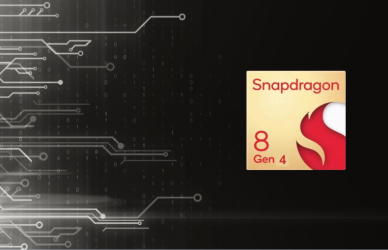Computers in Design and Production And Its Role
Computers in Design and Production And Its Role. The computer plays a vital role in manufacturing processes, as it supports the production process, but does not control it directly. The computer performs management and planning functions more effectively than a human, such as step-by-step processes for the development of a product.
Another example of this is part programming in numerical control (CAM), which is used to schedule production operations in a factory. It can also help manage costs by determining the best method of production.
CAD
CAD is the use of a computer to model and simulate a product or structure. It is used in every step of the engineering process, from the initial sketch to the final product. It can be used for both design and documentation. Many CAD applications feature advanced animation and rendering capabilities to help engineers visualize the final product. Some CAD systems run on Linux or Unix platforms, and others offer multiplatform support.
CAD and CAM have become entwined as the two have advanced from separate origins and are now integrated as part of a larger system. While they may be conceptually distinct, their benefits are largely the same. Using a computer in the design phase, a designer can produce components with better accuracy, minimize waste, and reduce energy consumption. With CAD, manufacturers can design and manufacture products more efficiently than they can without it.
The most obvious benefit of CAD is speed and accuracy.
CAD makes the entire production process faster because engineers no longer need to recreate designs if they want to make changes. They can reuse elements from previous designs, isolate individual components, and analyze them separately. CAD allows engineers to fully analyze a design, such as stress and flow of fluid simulations. Engineers can test the design’s strengths and weaknesses before committing to manufacturing it.
CAD systems can produce three-dimensional models of objects. CAD models can be viewed from any angle, sliced, and tested with a variety of simulation methods. Furthermore, users can move parts and other components within the coordinate system using translation and rotation operations. Dimensioning functionality is another key advantage of CAD systems. These systems assign size values based on the drawing’s dimensions, and they can be modified to fit any situation.
CAM
CAD and CAM are closely related processes. Computers in Design and Production And Its Role. Computers in Design and Production And Its Role. CAD helps product designers create blueprints of the products they want to make, and CAM is the programming language for machines. Combined, these two methods allow manufacturers to make almost any product. CAD allows them to create models in plastic, wood, and metal. CAM allows them to use the same software to make models from more complex materials, like metal.
Computers in Design and Production And Its Role
CAD, or computer-aided design, is the first step in the manufacturing process. It allows engineers to create product designs and modify them before machining. CAM allows designers to test products to ensure their functionality and application. The two terms are often used interchangeably, but there are some differences between them. To begin with, CAD is a graphical system used by engineers to make 2D and 3D drawings. These drawings are referred to as models, and they contain a set of physical properties.
CAM software is not cheap to purchase, and if your business is small, you may have to invest in it yourself. However, this software requires a large upfront cost. Subscription-based CAM software, on the other hand, is cheaper to buy. Furthermore, computer-aided manufacturing requires skilled employees to use it. Depending on the type of CAM machinery that you use, this system may be difficult to learn. CAM software can also be expensive to purchase, since it requires a lot of computer power and will require more maintenance and breakdown repair.
CAM is an important part of the manufacturing process
. It can save time and money by reducing the number of stages required for prototypes, design changes, and retooling manufacturing lines. CAM is a powerful technology that helps manufacturers make their products faster and more efficiently. It has become embedded in several industry verticals, but it has expanded its role beyond the engineering world. The latest developments in computer technology combine CAD and CAM and create a new name for it: Computer Integrated Manufacturing.
Human-machine interface
A well-designed Human-Machine Interface (HMI) can increase the usability of a machine and help manufacturers respond to changing conditions faster. The Human-Machine Interface can also reduce the risk of downtime through automation and safety protocols. A modern HMI will also be more useful in diagnostics, giving operators more context for error codes and allowing them to troubleshoot problems more quickly. It may also contain instructional videos or PDF documentation, allowing users to see more accurate, actionable information about the machine’s use.
Choosing the right color for your HMI depends on your intended audience and the specific task you need to perform. While a lot of people can see the entire spectrum, not everyone can reliably see certain colors. To make it easy for everyone, use color to emphasize only the most important information. Highlighting alarm conditions and problem states should be indicated with a specific color. Also, keep navigation simple, clear, and consistent.
When designing a man-machine interface, the characteristics of light are critical. Designers rarely consider these characteristics, but the light has different characteristics. The main program interface in Figure 6 exhibits a gaze duration of about three seconds, which is the average time it takes people to scan the main interface. Using color wisely is crucial to a user’s comfort and efficiency. If the information displayed on an interface is difficult to interpret, consider using alternate methods.
Using the formal law of beauty is a key part of a human-machine interface. It is the basis for creating user-friendly environments and taking into account different backgrounds. Information display is a key aspect of the interface, allowing users to judge and perform operations. Information is mainly transmitted through the senses, but also visual information is vital to judging the next action. The human-machine interface is a very important component of any modern machine.
CAD software
CAD software is used for designing clothes in several aspects. It allows designers to create better-fitting garments and increase the quality of products. The digital models show details of the stitching, which can increase the quality of a product. They also show where seams will break and how to avoid them. CAD software allows designers to see how a garment will look like once it is sewn. This software is used during all stages of designing, from the initial design process to the final product manufacturing.
CAD is an important tool for design teams.
In the past, designers had to draw the design by hand and redraw it if they wanted to make alterations. However, today’s CAD software allows designers to visualize their designs, test them against real-world variables, and even alter them. This helps design teams control the quality of the final engineered product. They can also diagnose problems and make changes to them, saving time and money.
Traditionally, experts have had to perform these steps by hand. The incorporation of artificial intelligence (AI) has made the CAD system much more efficient. It has improved algorithms and accuracy and can help designers eliminate the need to spend countless hours analyzing designs. With AI, designers can design products more efficiently, faster, and with fewer errors.
CAD is also used for manufacturing purposes.
Modern CAD software makes it easier to create 3D models and share them with colleagues. Unlike traditional drawing and modeling methods, 3D CAD is easier to share with others and allows for review and modification. In addition to improving design productivity, 3D CAD can help manufacturers improve the accuracy of their designs. The best part about CAD is that it is to and use.
CAM machine tool
CAM, or computer-aided manufacturing, is a process that uses computers to manufacture products. CAD software is used to create blueprints that product designers can use to program CAM machines. CAM can be used to create models in a variety of materials, including metal, plastic, and wood. Unlike manual machining, which often involves errors, CAM can produce quality results in half the time.
CAM software will identify machining setups necessary to manufacture a part. This computer software will then generate a G-Code program for the CNC machine, which can read and produce the desired part. The software will also generate tool paths and spindle speeds and feed rates for each machining operation. Once the CNC software has generated the G-Code program, it will send instructions to the machine for machining.
CAM software prepares CAD models for machining.
The machining process involves the controlled transformation of raw materials, such as steel, using drills, saws, and boring tools. CAM software will check for errors and create a toolpath for the model. The toolpath will determine the exact parameters and orientation of the machine to create the final product. It will also be able to calculate the cycle time needed to complete machining.
CAM software has an essential role in computer-aided design and manufacturing.
It is often used in conjunction with CAD software to produce better-quality products and a more efficient process. CAM software helps manufacturers manage, store, and transport their products. It is a key part of modern manufacturing and an invaluable tool. It can help manufacturers with all aspects of production, from product planning and development to logistics.
Read also these articles:
Top Two Main Functions of Computer Design
FAQ:


